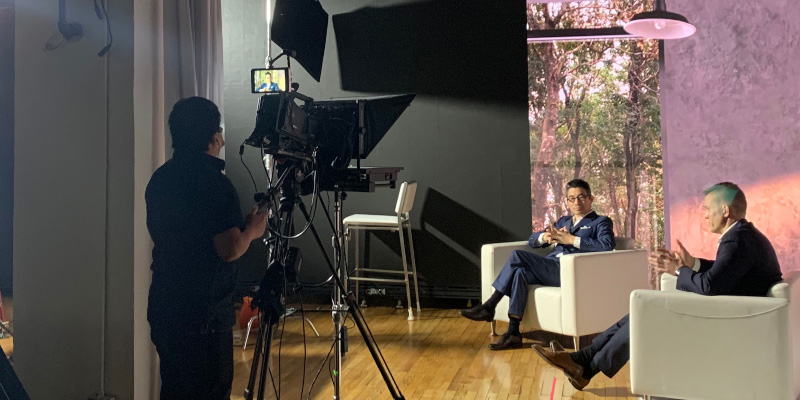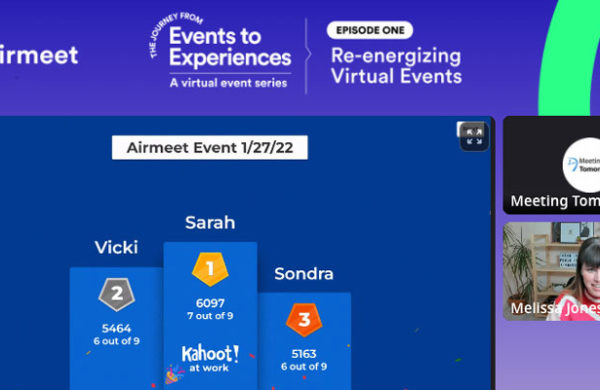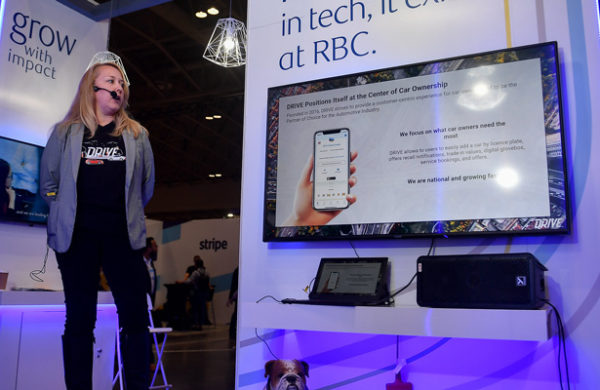
With vaccines now making in-person gatherings a safe reality, event planners are turning to hybrid events — and finding they have tons of questions about production.
The questions (and confusion) totally make sense! Hybrid event production requires thinking out of the box, even for many experienced event planners who have hundreds of in-person or virtual events under their belts.
Over the last ten years, we’ve produced thousands of events in many different formats. Along the way, we’ve picked up lots of best practices to help event planners embarking on this new(ish) format, including these top 10 hybrid production tips.
1. Avoid audio issues and always do a lip sync test.
Audio is the most challenging part of a hybrid event. Have conversations with your production company early and often to confirm they have experience with this.Test all audio feeds in advance to eliminate any echos or feedback. And always do a lip sync check so you don’t end up distracting your audience with off-sync audio.
2. Rehearse with ALL your presenters.
Rehearse with both your onsite presenters and your remote presenters. This helps everyone be prepared with their transitions and understand what exactly they’ll be looking at while they’re presenting.
3. Have at least 2 cameras for different angles.
We recommend having at least 2 cameras. You can switch between different shots of the presenters, a wide angle of the stage and shots of the audience. This helps your audience at home feel like they are there.
4. Consider the impact on your room’s design.
Consider how the cameras and other AV equipment will impact your room’s design. Larger cameras work great to create a “studio” environment. Meanwhile robotic cameras are best if you need the cameras to be much smaller and more discreet.
5. Elevate confidence monitors to eye-level.
Elevate your confidence monitors up next to the cameras. That way, when your presenters are looking at their notes or the live feed, they are looking at the camera and making eye contact, and not looking down.
6. Fast internet is crucial to the success of your hybrid event.
A fast internet connection is crucial to the success of your hybrid event. A good rule of thumb is 5 megabits of upload and download speed. Your venue may only give the download speed. So be sure to double check the upload speed, too!
7. Have a backup internet option ready.
Always have a backup internet option ready. If your main internet source dies on you, your backup source needs to automatically connect to minimize any interruptions.
8. Assign someone on your team to focus on remote attendees.
Assign someone on your team that is not onsite to be solely focused on your remote audience. They can respond to chats and questions or make announcements. This is key for making sure they’re having fun and feel included.
9. Use space in your venue to connect your live and remote experiences.
Use physical space in your venue to connect your live and remote experiences in creative ways. For example, use monitors to pull up Q&A, poll results, or social media mentions. Or, set up a place where in-person and remote attendees can network on iPads.
10. Create a strategy for each different audience.
Remember: Comparing live events and virtual events is like apples and bananas. Your hybrid event is a banapple. You have to create a strategy for each different audience, and build something entirely new. Start by considering every element of your agenda!! And reimagine an experience every step of the way with everyone included.
Are you planning a hybrid or virtual event? We’d love to learn about it! Reach out to us here to learn how we can produce your hybrid, virtual, or fully in-person event in any city nationwide.



